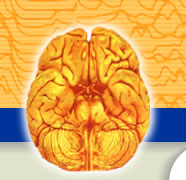New York Academy of Traumatic Brain Injury
Fordham University, November 18, 2000
The Potential Impact of Transcendental Meditation on
Recovery from Traumatic Brain Injury
Alarik T. Arenander, PhD, Director, Brain Research Institute
 |
|
 |
Traumatic brain injury (TBI) can present as interrelated problems of neurophysiological imbalance and incoherence. Optimal treatment of brain injured individuals requires an integrated, holistic approach to the possible wide spectrum of cognitive, emotional and behavioral dysfunction. Outcomes of injured individuals rely on diagnostic and prognostic information obtained soon after injury in order to optimize treatment and rehabilitation. Trauma can impact specific cortical and subcortical areas and/or result in diffuse, nonspecific axonal injury. One of the best predictors of outcomes is based on electroencephalographic (EEG) variables, in particular, EEG coherence and phase. Early studies of Thatcher and colleagues supported the subsequent growth of quantitative EEG (QEEG) in the evaluation and understanding of TBI. These methods have, in turn, supported the therapeutic use of neurobiofeedback to entrain specific brain rhythms during rehabilitation.
Meditation techniques have gained increasing acceptance as complementary or alternative modes of restoring physiological and psychological imbalance and reducing acute and chronic disorders. Thus, this mental approach has been used as a means of helping to reverse the physiological, psychological and behavioral incoherence that can result from brain injury. Over 600 research studies show rapid and accumulative benefits from the practice of the Transcendental Meditation (TM) technique in nearly every area of mind-body function. Meta-analysis, comparing over 500 studies on different forms of relaxation, stress control and meditation, that the TM program is by far the single most effective means of eliminating stress and rebalancing the mind and body. The TM technique produced a greater benefit than any other meditation or relaxation technique in areas of anxiety, high blood pressure, substance abuse, self-actualization, etc. It is also simple, a natural and easy procedure to learn & practice.
One of the unique characteristics of the TM technique is the rapid onset and maintenance of high levels of short- and long-range EEG coherence, in alpha, theta and gamma frequencies. Research further demonstrates the strong correlation between EEG coherence and the growth of intelligence, creativity, moral reasoning, concept learning, academic performance, and neurological efficiency. These correlations parallel the above-mentioned predictive correlation of EEG coherence and brain injury outcome. Base on extensive neurophysiological and psychological research, as well as numerous studies on substance abuse and violent behavior, the TM technique offers any individual the ability to dramatically, and in an integrated, holistic manner, increase brain coherence and function. One can predict that the inclusion of the TM technique as a complementary therapeutic modality should facilitate the rate and extent of recovery from TBI. Thus, the TM technique should be examined for its potential benefit in the rehabilitation of individuals with TBI as soon as possible following the accident.
| 